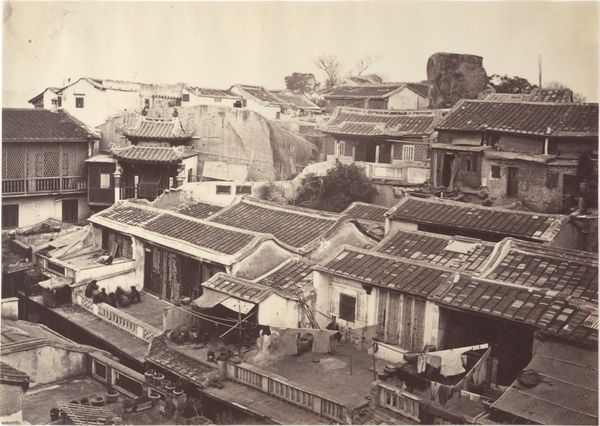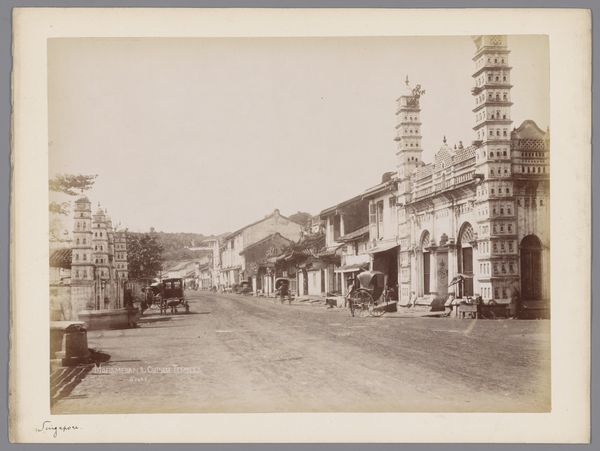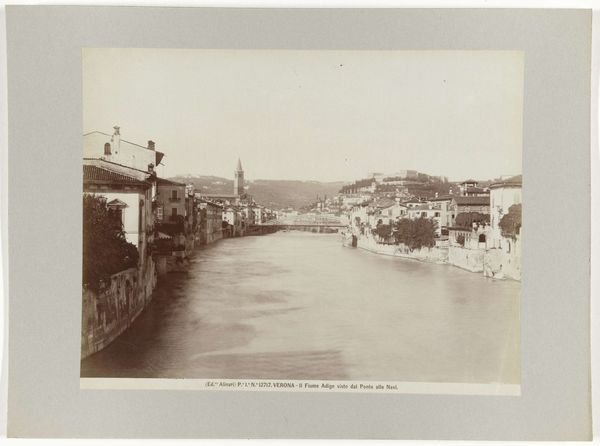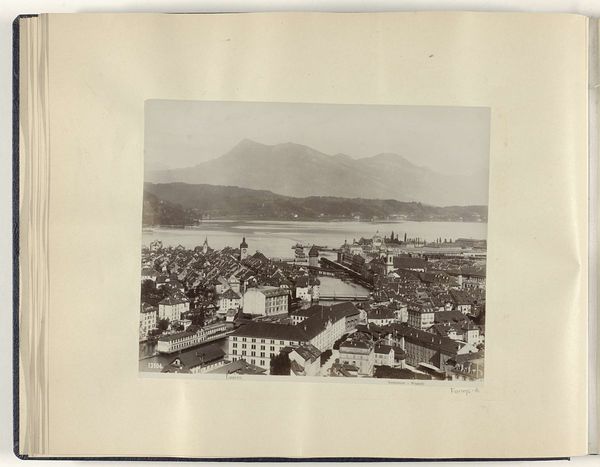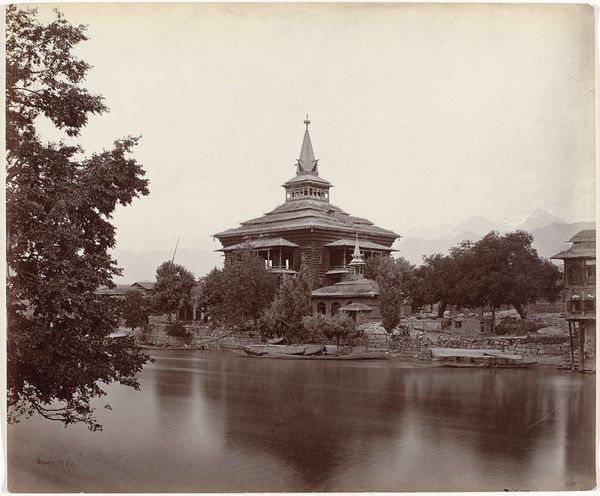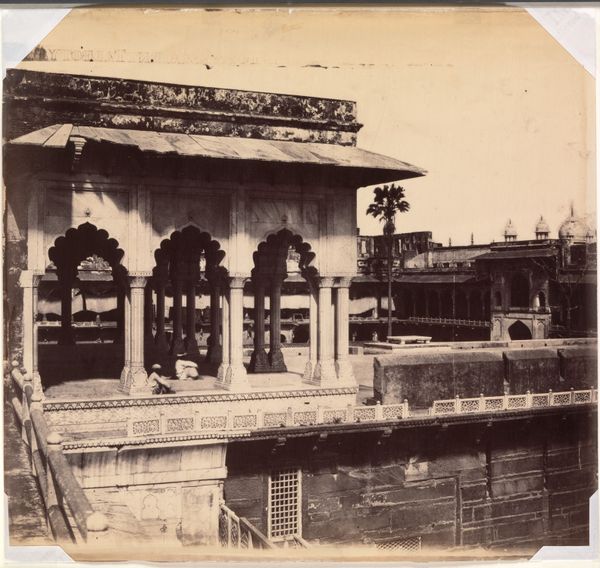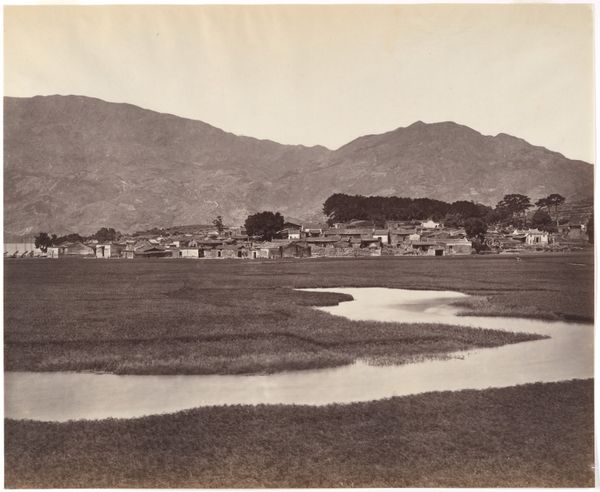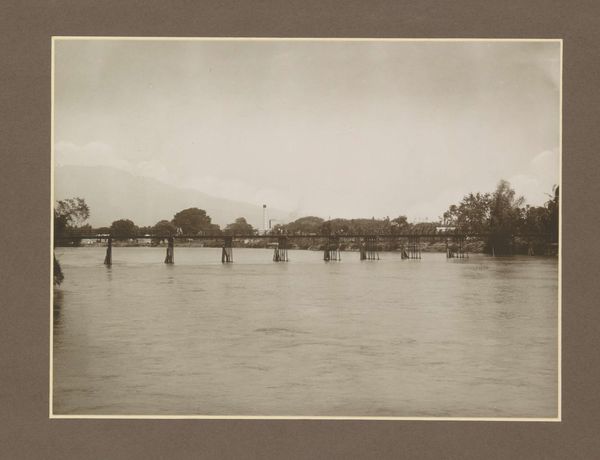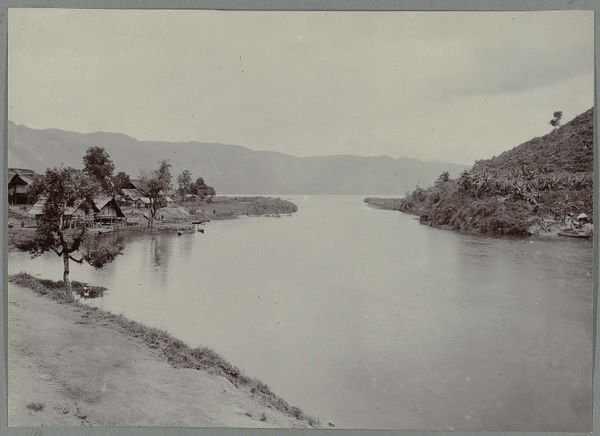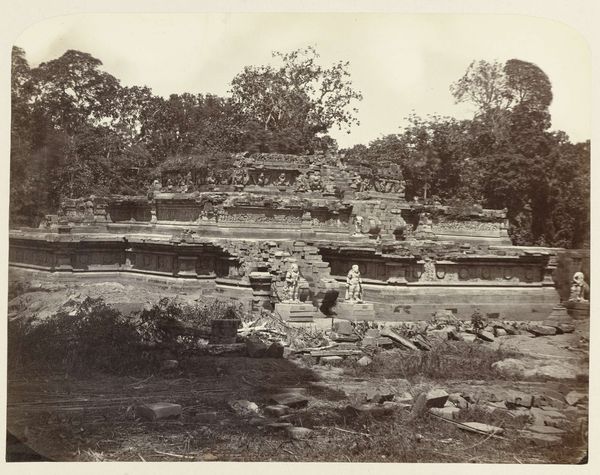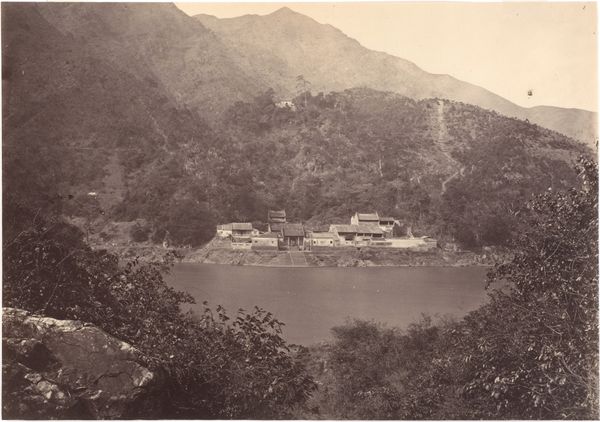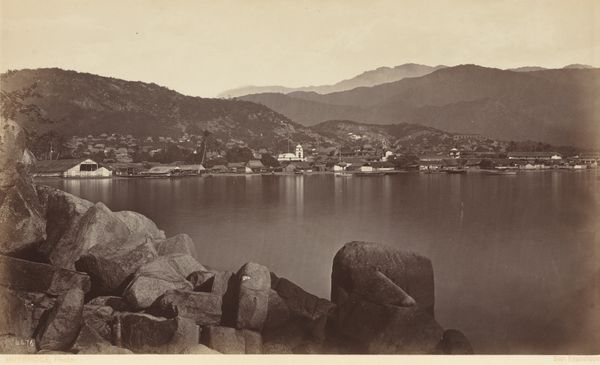
Gezicht op Srinagar in Jammu en Kashmir in India, met de Shah Hamdan Moskee (Khanqah-e-Moula of Shah-e-Hamadan Masjid) op de oever van de rivier Jhelum 1864
0:00
0:00
photography, gelatin-silver-print
#
excavation photography
#
scenic
#
photo restoration
#
asian-art
#
landscape
#
river
#
outdoor photography
#
photography
#
outdoor scenery
#
scenic photography
#
mountain
#
orientalism
#
gelatin-silver-print
#
monochrome photography
#
outdoor activity
#
cityscape
#
scenic spot
#
monochrome
#
shadow overcast
Dimensions: height 224 mm, width 288 mm
Copyright: Rijks Museum: Open Domain
Editor: Here we have Samuel Bourne's "Gezicht op Srinagar in Jammu en Kashmir in India," taken in 1864. It’s a gelatin-silver print depicting a cityscape with a river running through it. I find the overall tonality quite calming; it’s almost monochromatic. What catches your eye? Curator: Primarily, the composition intrigues me. Observe how Bourne uses the river Jhelum as a dominant horizontal element, effectively bisecting the image. The architectural structures on the banks, culminating in the Shah Hamdan Mosque, offer a compelling vertical counterpoint. The buildings punctuate the scene. What semiotic relationships do you see emerging from the placement of the mosque, versus the humbler dwellings that frame the picture? Editor: I guess the mosque is emphasized, suggesting cultural and perhaps political importance through visual prominence? How much does the photographic medium influence this perception? Curator: Precisely. Consider Bourne's masterful manipulation of light and shadow, characteristic of the gelatin-silver process. Note the textures rendered, from the placid river to the intricate wood-worked architecture, how does this inform our understanding of materiality within the colonial gaze of landscape photography? Editor: The textures do add depth! The attention to detail in the mosque and the buildings lining the water's edge gives it a kind of tactile quality despite being a two-dimensional image. Curator: Indeed, a visual echo. The interplay invites the eye to wander, prompting considerations about civilization and environment. The way this oriental landscape, its structure and light contrasts the typical landscapes back home. It invites an almost alien interpretation, even by modern eyes. Editor: I see now. So the formal elements really dictate how we perceive the subject and the themes it conveys. Curator: Exactly. Analyzing solely the visual structure offers considerable insight, even detached from precise historical narratives. The artwork holds value in composition itself. Editor: Thank you for pointing out those crucial aspects, seeing beyond the subject matter to appreciate the image's internal relationships has been helpful.
Comments
No comments
Be the first to comment and join the conversation on the ultimate creative platform.
